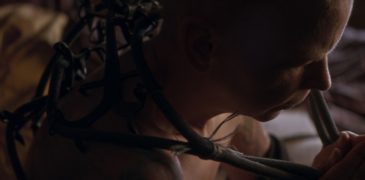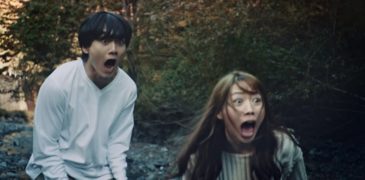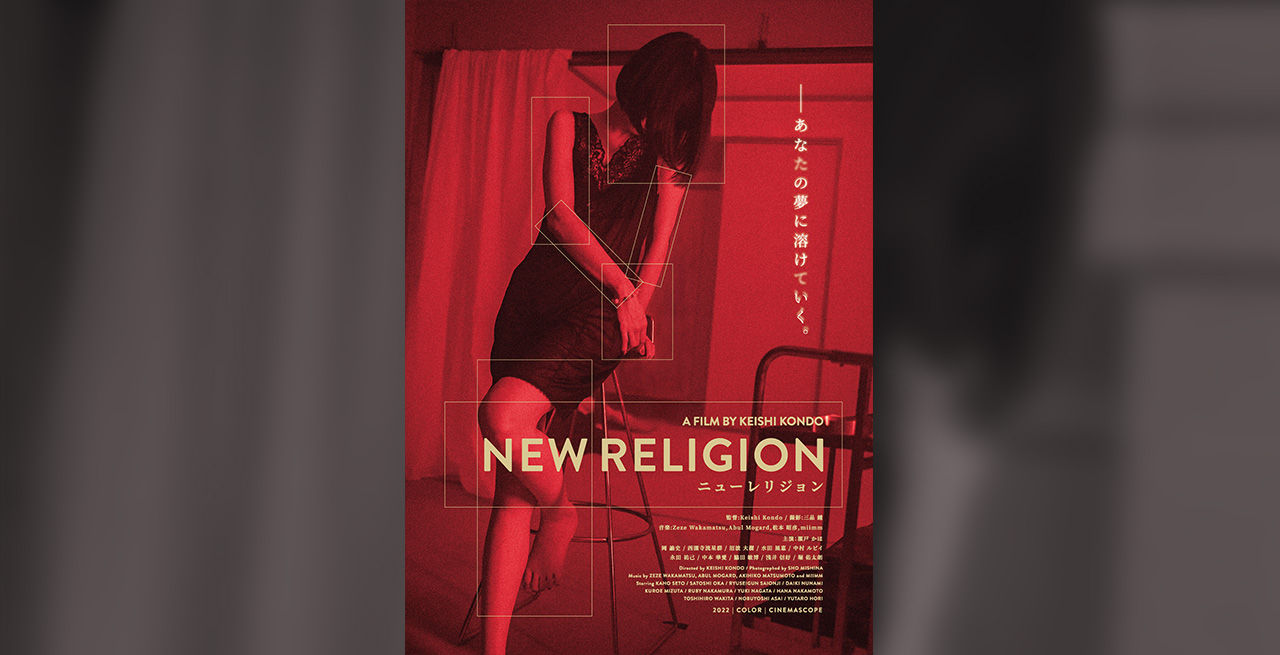
New Religion is a 2022 Japanese surrealist horror, written and directed by Keishi Kondo in his feature-length debut. Kenshi is also known as the writer/director/cinematographer behind the drama short See You Again (2020).
“After her daughter’s death, divorced Miyabi works as a call-girl. One day, she meets a strange customer who wants to photograph her spine. Then, at another assignation, her feet. She soon realizes that whenever she allows her body to be photographed, her daughter’s spirit gets closer. Soon only her eyes remain to be captured, leading to the collapse of society.” – FrightFest
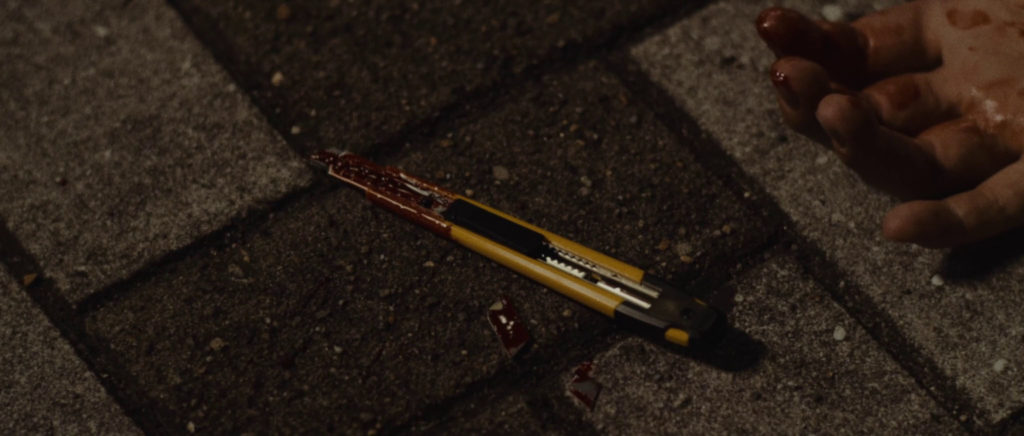
Featuring an unhampered descent into madness, New Religion’s story has an undoubted liquid design. Effortlessly sleek in its delivery, scenes flow from one to the next in an effortlessly fluid display as distinct undertones of metamorphosis flood every scene. The protagonist’s divorce, her change in profession, and undergoing significant psychological changes all lend to strengthening this metamorphic metaphor – some more obvious than others. However, the story relies strongly on insinuation, as several points lack any annunciation of fact. Instead, the humanistic displays of the cast as well as ambient storytelling, organically relay these intended details to the audience.
Additionally, compounding this idiosyncratic narrative is an impeccable use of cinematography. Highly eloquent in its design, the implementation of unorthodox camera angles and pans, such as the Dutch angle, upside-down shots along with static slow zooms deliver an astounding grade of aptitude in visually conveying Miyabi’s declining mental stability. Furthermore, New Religion features an expressive use of color, drenching scenes in luscious shades of deep reds and blues throughout its runtime. Although these effects are conveyed with limited application, these vibrant shades exacerbate a scene’s intended tone dramatically without losing their power through overuse.
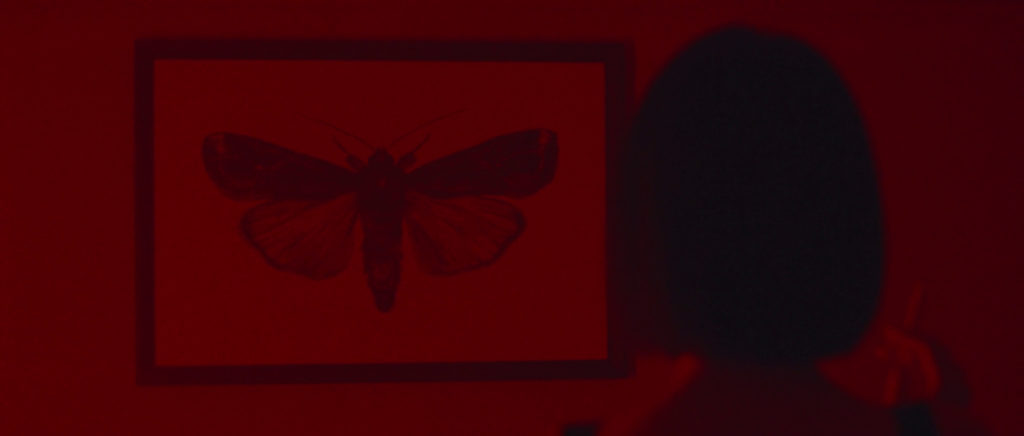
Consequently, New Religion’s visuals would not be as powerful without an extraordinarily dominating soundtrack to boot. Written by Akihiko Matsumoto, the score features a cacophony of low rumbling groans, digital interference, and unsettling picked strings creating a crescendo of simultaneous rising and falling notes—the score along with the visuals delivers unparalleled tension throughout. Similarly, the animatronic voice of the antagonist, who uses an Electrolarynx, provides an overtly chilling connotation to their performance. Several octaves deeper and chaperoned by digital static, this unnatural aspect certainly leads to an uneasy apprehension when he is delivering dialogue.
A masterclass in rising tension, this gripping tale of the degradation of society is visually delectable from beginning to end. With an amazing performance from the minuscule cast, gorgeous cinematography, and unexpectedly explosive ending; New Religion blew all my expectations to rubble in a refreshingly remarkable way. Writer/director Keishi Kondo’s exhibition of skill and knowledge on his first feature-length feature is a near-on expert realization of this atypical story with such innovative visual and audio flair. As such, New Religion is best experienced in a cinema, availing oneself with the ability to truly experience the sights and sounds on offer.
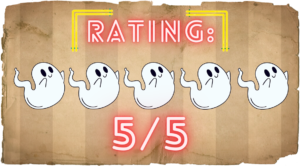
We Watched New Religion at FrightFest 2022. The films is available to purchase from Third Window Films from March 10.
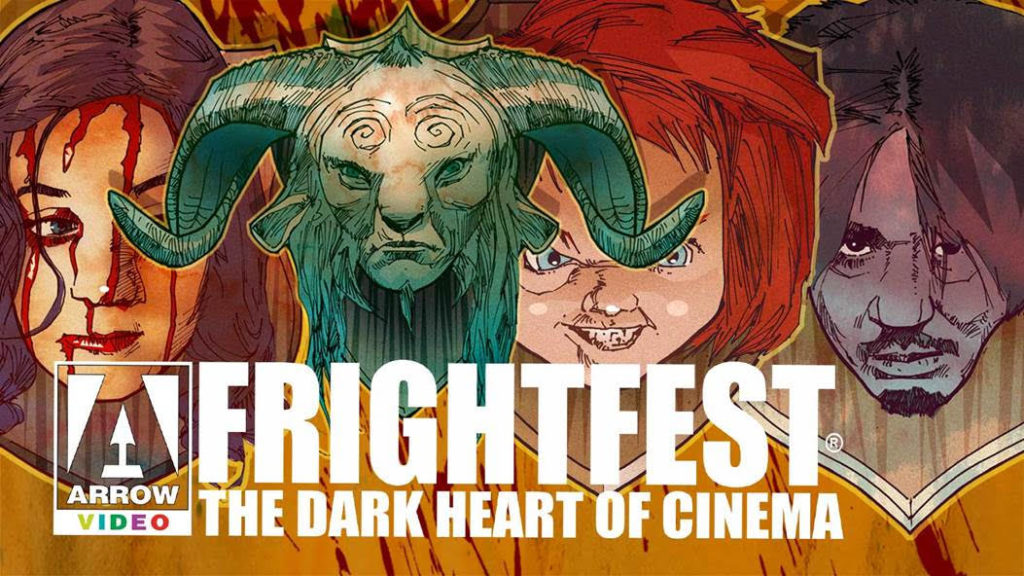
Past Festival Coverage
Japan Film Fest Hamburg JFFH 2021 – Short Films Spotlight
One of the biggest highlights of the Japan Film Fest Hamburg rests within the diverse selection of short films. For the audience, this means getting the chance to see original…
The Rebrand (2025) Film Review – Turning Queer Mommy Content Into Nightmare Fuel [Unnamed Footage Festival]
Who knew queer mommy vlog culture could be this unhinged? The Rebrand (2024), written and directed by Kaye Adelaide and with additional writing from Nancy Webb, is a wickedly…
Luzifer (2021) Film Review – Religious Fervor and Unforgiving Isolation
“Every day we stray further from God’s light” may be a ‘meme-able’ saying, but it is one that is none-the-less true when we look at a mix of contempt and…
Incredible But True (2022) Film Review – Time Travel at its Most Inconvenient
Director Quinten Dupieux has been building a catalog of films ever since his release of Steak back in 2007. (However, you could argue he defined his image starting all the…
Midnight Peepshow (2022) Film Review | Down the Rabbit-Hole…
The anthology film is almost as old as the industry itself. Perhaps the earliest example is D.W. Griffith’s Intolerance (1916), the director’s petulant response to wholly justified accusations of racism….
Yellow Dragon’s Village (2021) Film Review – Low Budget Insanity
The strength of the Japanese independent cinema has often rested on its ability to embrace absurdity and bring it together in a distinct yet cohesive manner. Consequently, the intuitive approach…

Hey there, I’m Jim and I’m located in London, UK. I am a Writer and Managing Director here at Grimoire of Horror. A lifelong love of horror and writing has led me down this rabbit hole, allowing me to meet many amazing people and experience some truly original artwork. I specialise in world cinema, manga/graphic novels, and video games but will sometime traverse into the unknown in search of adventure.


![The Rebrand (2025) Film Review – Turning Queer Mommy Content Into Nightmare Fuel [Unnamed Footage Festival]](https://www.grimoireofhorror.com/wp-content/uploads/2025/03/The-Rebrand-2024-Horror-Movie-Review-365x180.jpg)
